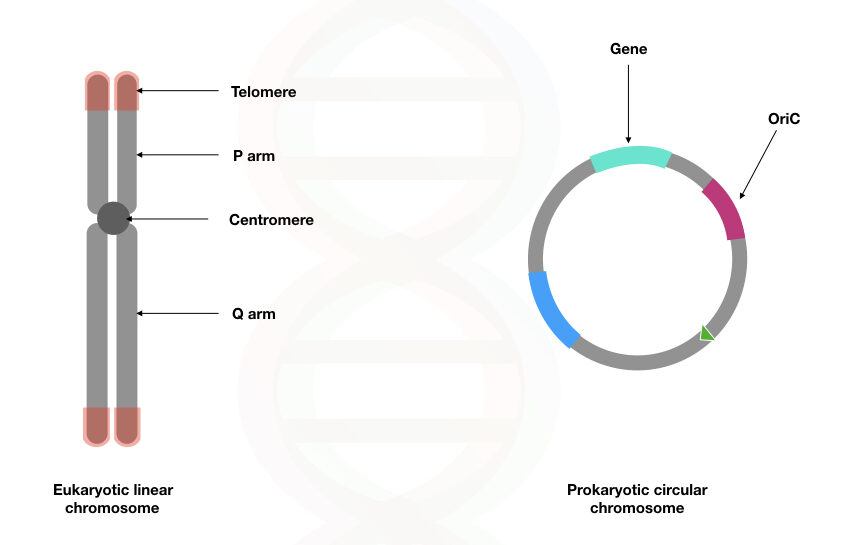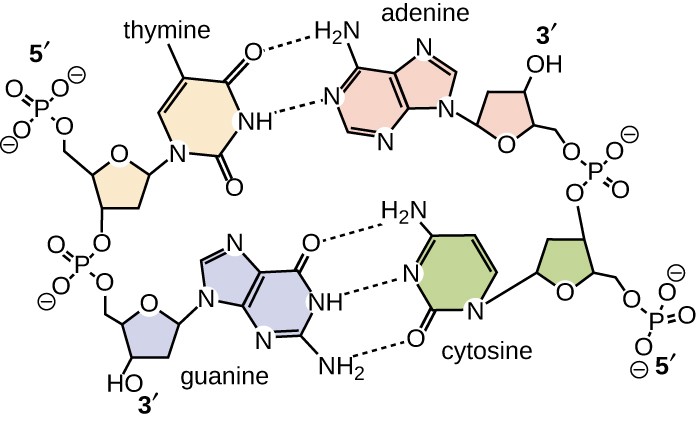Jed Quiaoit
Samantha Himegarner
AP Biology 🧬
358 resourcesSee Units
Who Contains Our Heritable "Data"?
DNA, or deoxyribonucleic acid, is a double-stranded molecule that contains the genetic instructions used in the development and function of all living organisms. The structure of DNA consists of two complementary strands, which are connected by a series of chemical bonds between the bases of each strand. These bases, adenine (A), thymine (T), guanine (G), and cytosine (C), form the "rungs" of the DNA ladder and are responsible for encoding the genetic information.
In some cases, RNA, or ribonucleic acid, also plays a role in the transfer of genetic information. RNA is a single-stranded molecule that acts as a template for the synthesis of proteins, and it can also act as a genetic material in certain viruses. The bases in RNA are adenine (A), uracil (U), guanine (G), and cytosine (C).
DNA and RNA are considered the primary source of heritable information because they contain the genetic code that is passed down from one generation to the next. This code determines the characteristics and traits of an organism, such as its physical appearance, metabolism, and susceptibility to certain diseases. Later on in the unit, you'll learn that the process of replication ensures that the genetic information is accurately passed on to the next generation, while mutations can lead to genetic variation and evolution.
Eukaryotic and Prokaryotic Cells
In eukaryotic cells, the DNA is packaged in the form of chromosomes, which are located in the nucleus of the cell. The chromosomes are made up of DNA and proteins, and during cell division, the chromosomes are replicated and distributed to the daughter cells. This ensures that each daughter cell receives a complete set of chromosomes and therefore a complete set of genetic information.
In prokaryotic cells, such as bacteria, the DNA is not packaged into chromosomes but is instead found in a single circular chromosome. Prokaryotic cells also have small circular DNA molecules called plasmids, which can also contain genetic information.

Source: Genetic Education
In addition to DNA and RNA, other types of genetic materials also exist, such as mitochondrial DNA and chloroplast DNA in eukaryotic cells. These genetic materials also play a role in the transfer of heritable information.
Nucleotide Base Structure and Pairing
The specific nucleotide base pairing of DNA and RNA is a fundamental aspect of their structure and function. The bases in DNA, adenine (A), thymine (T), guanine (G), and cytosine (C) pair in a specific way, known as base pairing, which holds the two strands of DNA together. Adenine pairs with thymine (A-T) and cytosine pairs with guanine (C-G). 🧑🤝🧑
This specific base pairing is known as complementary base pairing and is conserved through evolution. It is this base pairing that allows the DNA molecule to maintain its double-helix structure and also enables the genetic information to be accurately replicated and passed on to the next generation.
In RNA, the base uracil (U) is used instead of thymine, so adenine pairs with uracil (A-U) in RNA. This is one of the key structural differences between DNA and RNA.
Purines and Pyrimidines
The specific base pairing is also related to the chemical structure of the bases themselves.
- Purines, such as adenine and guanine, have a double ring structure
- Pyrimidines, such as cytosine, thymine, and uracil, have a single ring structure.
This structural difference allows for the specific base pairing between purines and pyrimidines. Adenine, a purine, pairs with thymine or uracil, a pyrimidine, and guanine, another purine, pairs with cytosine, another pyrimidine. This specific base pairing is conserved through evolution and ensures the stability and accuracy of the genetic information. ✅

Image courtesy of LumenLearning.
In addition to the specific base pairing, other structural and functional features of DNA and RNA also play a role in the transfer of genetic information. For example, the sugar-phosphate backbone of DNA and RNA provides a structural framework, while the sequence of bases encodes the genetic information. Together, these features of DNA and RNA make them essential for the transfer of heritable information in all living organisms.
Browse Study Guides By Unit
🧪Unit 1 – Chemistry of Life
🧬Unit 2 – Cell Structure & Function
🔋Unit 3 – Cellular Energetics
🦠Unit 4 – Cell Communication & Cell Cycle
👪Unit 5 – Heredity
👻Unit 6 – Gene Expression & Regulation
🦍Unit 7 – Natural Selection
🌲Unit 8 – Ecology
📚Study Tools
🧐Exam Skills

Fiveable
Resources
© 2025 Fiveable Inc. All rights reserved.